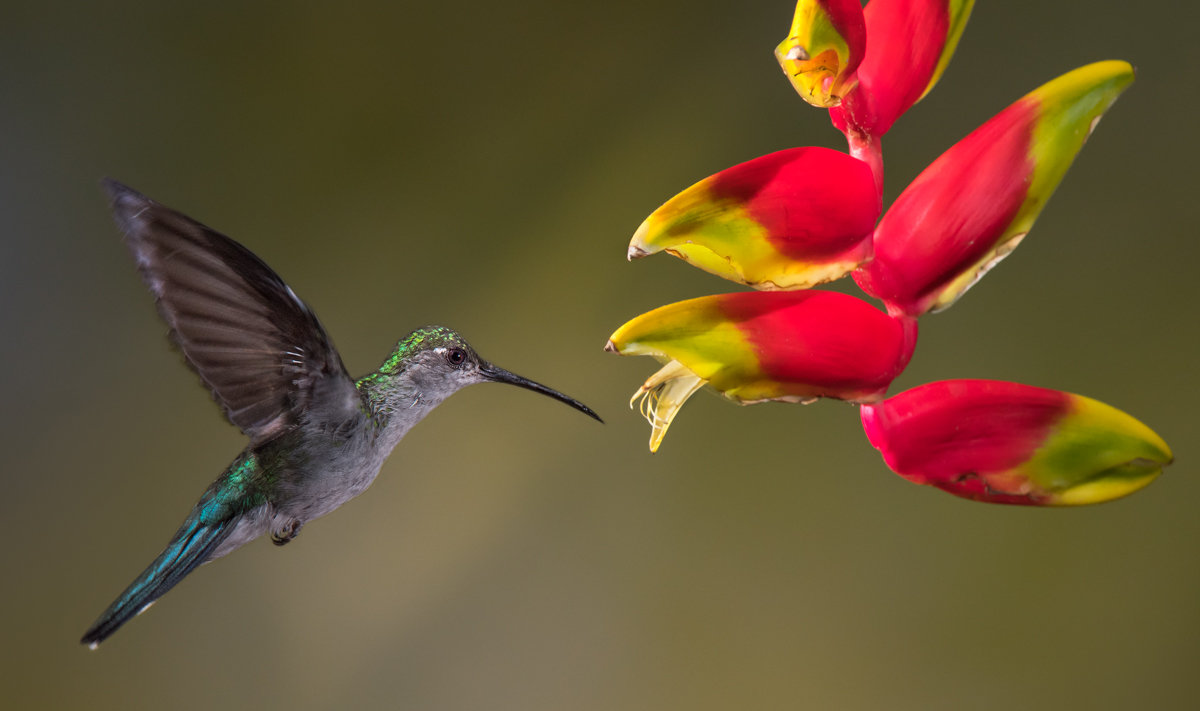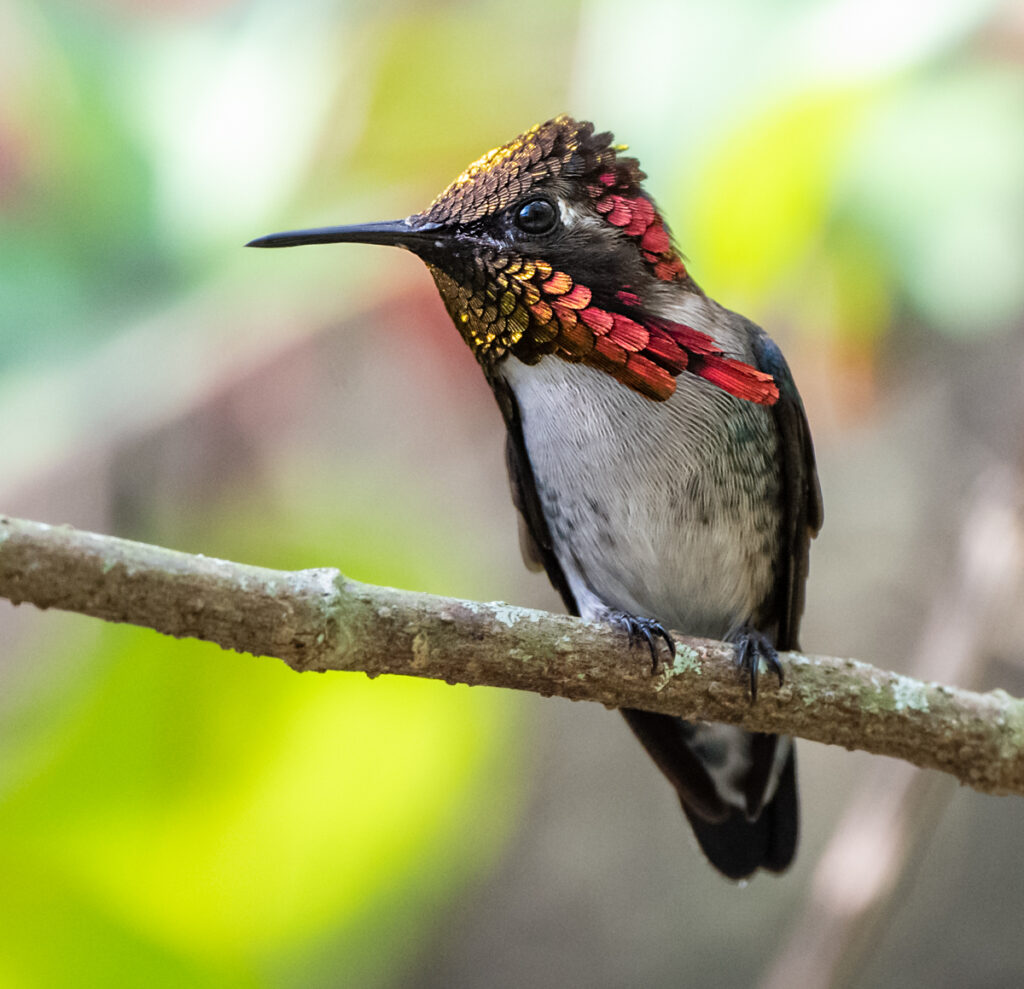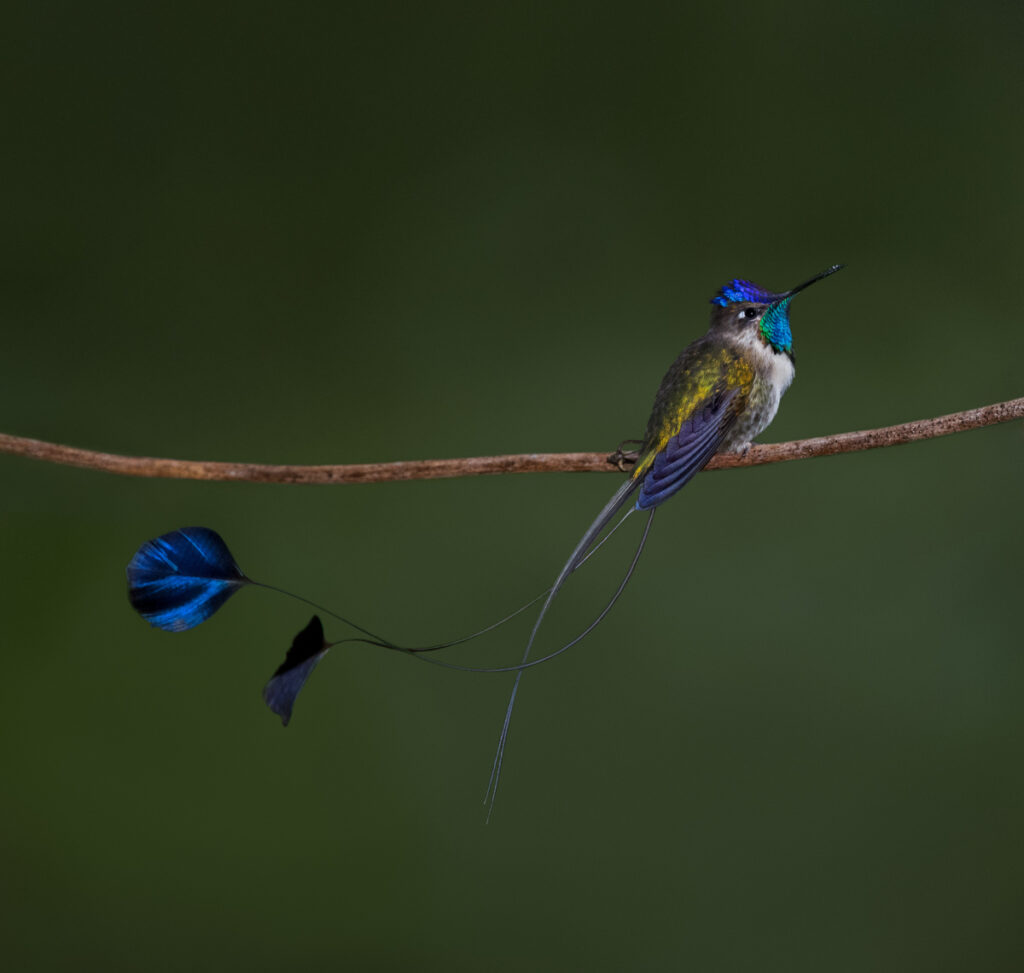
Hummingbirds are fascinating, and the more I get to know these little gems, the more fascinated I become. Photographing hummingbirds has allowed me to delve deeper into their tiny world, and I’ve discovered just how amazing and distinctive these birds really are. The bee hummingbird, for example, is found only in Cuba and is the world’s tiniest hummingbird. At just two-and-a-quarter inches long, these miniature marvels weigh less than two grams but pack a powerful punch for photography.
A Hummingbird’s Reflection
Those brilliant throat colors on the throats of most male hummingbirds aren’t pigmented at all. Instead, iridescent colors are reflected by the feather structure and can change in an instant as the bird moves even slightly. This makes shooting in bursts essential to capture different shades, and moving around to different angles or shooting in different light levels to see the full rainbow of each hummingbird.
Flowers Make the Photo
For even more color, I love to photograph hummingbirds among a variety of flowers. These tiny birds visit hundreds of different flower species, and different blooms add more color and texture to each shot. A fast shutter speed of 1/4000 to 1/5000 of a second is best when shooting hummingbirds, and it’s even possible to capture their fast tongues – hummingbirds lick 10-15 times per second! To bring hummingbirds right to the most beautiful flowers, it can help to lightly mist the flowers with nectar, which can also add beautiful dew-like drops to the shot.

Sword-billed Hummingbirds Take Center Stage
Some hummingbirds are even more extraordinary, such as the Sword-billed Hummingbird. This bird’s enormous bill is up to four inches long, and is the longest bird bill in the world when compared to the bird’s body size. Sword-billed Hummingbirds often perch with their bills pointed up to relieve strain from such a heavy, unwieldy bill, but that long bill helps them get deep into flowers other hummingbirds can’t reach.
Showing Off a Hummingbird’s Streamer
Of course, all hummingbirds are known for their needle-like bills, but their tails can be equally extraordinary. Some hummingbirds have forked tails or incredible tail streamers, or even strangely shaped feathers that draw attention to their tails. Shooting these hummingbirds on the move is a great way to catch their tails in different positions to really show off the structure and shape.
Catching a Hummingbird in Action
When hummingbirds move around can be one of the most challenging times to photograph these beauties, as they can fly up to 30 miles per hour and may reach speeds up to 60 miles per hour when diving. A fast shutter speed can freeze their wings, but sometimes a bit of blur in a flight shot can capture the motion and add character to the picture.
Hummingbirds are challenging but fun to photograph. There is always more to see and learn about even the most familiar hummingbirds, and the more you see and learn about these birds, the better you will appreciate their beauty and uniqueness.







